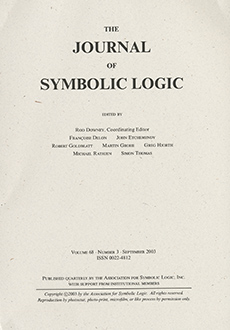Abstract
Higman essentially showed that if A is any language then SUBSEQ(A) is regular, where SUBSEQ(A) is the language of all subsequences of strings in A. Let s₁,s₂,s₃,… be the standard lexicographic enumeration of all strings over some finite alphabet. We consider the following inductive inference problem: given A(s₁), A(s₂), A(s₃), …, learn, in the limit, a DFA for SUBSEQ(A). We consider this model of learning and the variants of it that are usually studied in Inductive Inference: anomalies, mind-changes, teams, and combinations thereof.
This paper is a significant revision and expansion of an earlier conference version [10].
Citation
Stephen Fenner. William Gasarch. Brian Postow. "The complexity of learning SUBSEQ(A)." J. Symbolic Logic 74 (3) 939 - 975, September 2009. https://doi.org/10.2178/jsl/1245158093
Information





